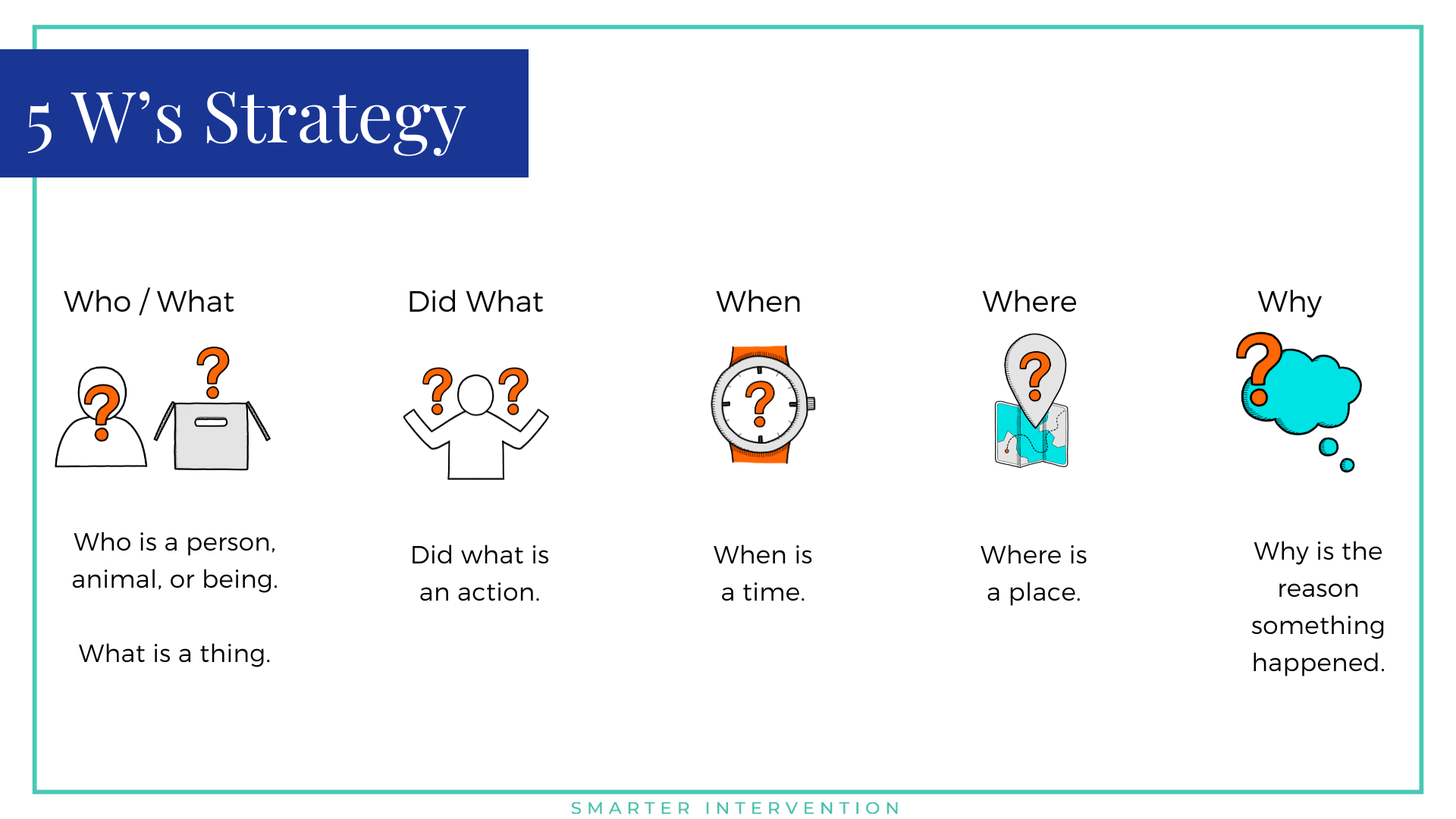Teaching Reading Comprehension - Strategies for Direct Recall
Do your students ever struggle to recall important information directly from a story or passage they've just heard or read?
If so, don’t worry, it's very common! And, we’re here to share our explicit teaching strategy to help students recall important information.
Now, when we teach comprehension, we teach the skills in a spiral fashion. Specifically, we provide a big picture overview for students of each of the 5 levels of comprehension we should consider as we listen to or read something, then we break it down and focus on each of the individual levels and strategies with each level.
We always follow a three-part process for reading comprehension. Before reading, during reading, and after reading. Before reading, we preview the content and generate background knowledge. During reading, we are looking out for key information. And after reading we are reflecting on what we've read. You can grab a set of reading comprehension bookmarks to provide visuals to help students remember the process!
When we provide direct and explicit instruction on comprehension strategies, we always start with an explanation of the skill and why it’s helpful. This helps students to have a bigger-picture understanding of the strategy.
Why do we need to recall details from the text?
Direct recall is our first level of reading comprehension, it creates a building block for all of our other comprehension skills. If we can't recall important information, we may be missing big chunks of meaning.
What exactly is direct recall?
Direct recall is the ability to remember information that can be found directly in the text. It’s information that the author has provided to us. We don’t need to make leaps or analyses with this type of information.
How do we support direct recall?
We use the 5 W's strategy to help students attend to and hold on to important information. Because there is a lot of information in texts, we need to be able to narrow our focus to the key details so we can remember them later. We use the 5 W’s to help us think about what important details we should focus on. The 5 W’s include:
Who, what, when, where, why.
We can remember this by putting up five fingers and putting one of the 5 W's on each finger. Or, we can take notes on a graphic organizer or sticky note for longer texts. If you want your own set of sticky notes, you can grab them here.
We can start practicing this at the sentence level and then move on to the paragraph and passage level. At the sentence level, we can find who/what (the subject), did what (the predicate), when, where, and why (the adverbial phrase). At the paragraph and page level, we can start noting who, what, when, where, why (realizing that not all apply every time).
The benefit here is that it helps us begin to hold onto the information in our short-term working memory AND it helps us to self-monitor to make sure we're still paying attention (raise your hand if you've ever read an entire page or more of a book only to realize that you didn't retain any of it!)
That's it!
This super simple strategy can help students begin to recall the important information from a text (and the added visuals can provide a multisensory learning experience for your students).
If you’re looking for activities and/or passages to help support Direct Recall, check out the 5CCL Activity Library where you can get access to tons of activities (like the direct recall activities below!) to support this critical foundational skill!
Check out the video below for more information!








